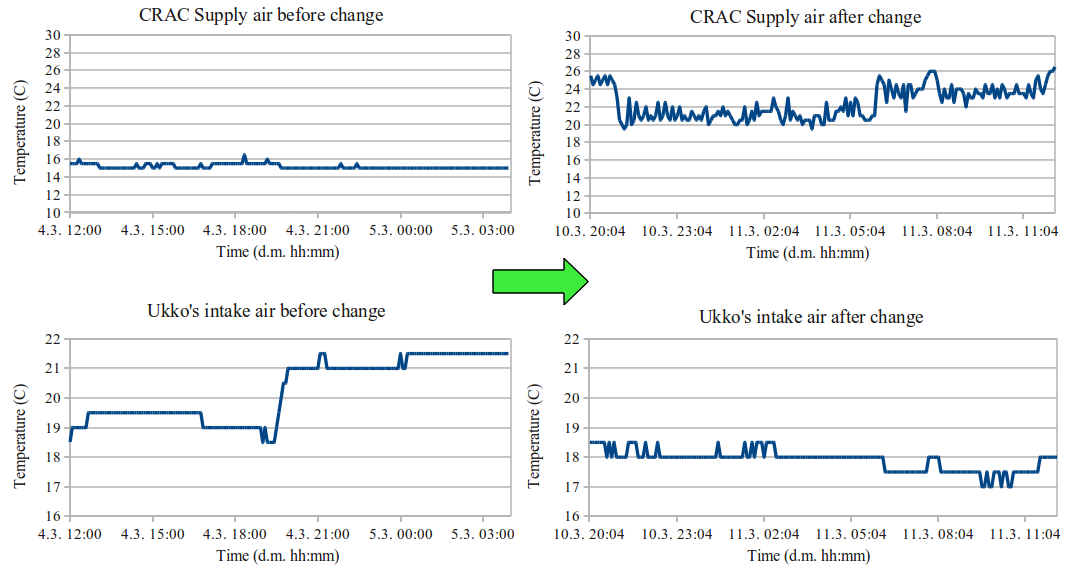Cold Aisle Containment in our server room
On Thursday 10 March 2011, we installed a so-called Cold Aisle Containment in the server room shared by the Department of Computer Science and HIIT. This is a rustic contraption made from transparent PE plastic, air-conditioning tubes, and a great deal of duct tape. It cuts back on the need to cool the server room very efficiently, as the air-tight plastic stops the intake and exhaust air from the servers from mixing.
After: http://www.youtube.com/watch?v=jZIuJIVYsDs
Before: http://www.youtube.com/watch?v=ufb0PkCal2k
I videoed the setup before the change and after. The video may look like our server room is starting to resemble one of those biospheres that were popular in the 1990s. The advantage with transparent plastic as building material is that it puffs out with pressure, so now our maintenance team can monitor the cooling capacity of the computer room air conditioners (CRAC) by keeping an eye on the surface of the plastic. In this way, the CRACs will produce exactly as much cool air as the servers need.

Before installing the plastic bubbles in the server room, the CRACs were running full blast all the time. One of them pushed 15-degree (C) intake air under the floor, which became 19-21 degrees when it hit the servers because of the mixing of the air flows.At the end of our three hours of hard work this changed considerably, as the flow of exhaust air became more efficient, making work in the server room much more humane.
The intake air to the servers used to be 20 degrees, but now we need much less cooling capacity. We were able to shut down one CRAC completely and crank up two others 7 degrees. To adjust the last two devices, we need some special tools that we are still waiting for. We will continue to adjust the CRACs, as we are aiming at intake air of 22 degrees and to turn off one more CRAC unit.
Servers in the cold
In addition to optimising the server room, we have been running (other) servers outside since February 2010. At this moment, there is a 26U rack placed on the roof terrace of Exactum. It is protected from water and snow by a kind of cell. You can admire its winking lights at night in the images from the Exactum camera:
Near: http://www.cs.helsinki.fi/u/tkt_cam/exactum_terrace.jpg
Afar: http://www.cs.helsinki.fi/u/tkt_cam/exactum.jpg
We are monitoring the servers constantly, and they are part of the Folding@home calculation. In addition, anyone can ask about the inner temperatures of the servers via a Twitter feed set up to monitor them. Twitter is in a state of perpetual beta, so more features are on the way.
Twitter: http://twitter.com/HelsinkiChamber
Folding@home: http://fah-web.stanford.edu/cgi-bin/main.py?qtype=teampage&teamnum=200947
The intake server air is not filtered in any way. The most frequently asked question is, whether the moisture condensing inside the servers harms them. However, the condensation works in reverse, since the servers are cooled by air, so they are always warmer than the air around them. The next most frequent question is whether we could build a sauna with the exhaust air from the servers. We will return to this question in the near future.
If this or any other projects seem interesting to you, you can learn more on Thursday 17 March at the event "Science in the best of company" during the demo session at 17:30-20.

- Researcher Mikko Pervilä
You can also follow our research in our blog at http://blogs.helsinki.fi/pervila/.
